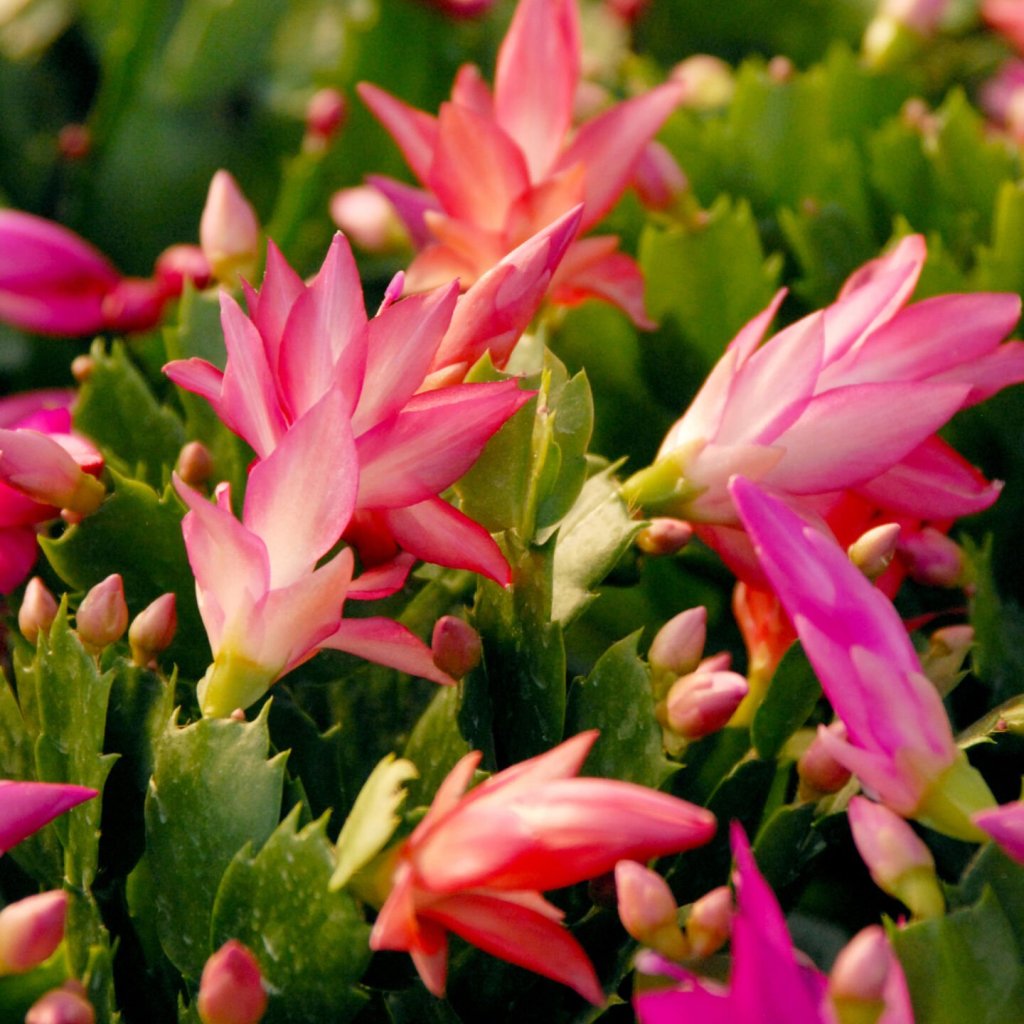Sperry: Care for Christmas cactus now for holiday season blooms
Published 5:00 am Saturday, March 29, 2025

- Caring for Christmas cactus during the summer can lead it to bloom like this around Thanksgiving. (Contributed Photo)
Dear Neil: I realize it’s now spring, but I want to make a difference next Christmas. I have a very healthy Christmas cactus in my kitchen. It gets plenty of artificial light, but it has never bloomed. I feed it regularly, but I’m not sure that ever helps. What can I do?
Christmas cacti are native to the tropical rainforests along the coasts of South America. They’re used to having shade, but they do probably get more light than what your plant receives where it is. So that’s one small possibility. The much larger consideration is that you have the lights on at times in the evenings. Christmas cacti are photoperiodic, meaning they measure the number of hours of total darkness they receive. They must have long nights in order to produce their flowering hormone. If their dark periods are interrupted by even a few minutes of bright light, it will delay blooming proportionately. Try covering your plant with a box each evening starting Oct. 1. Remove the cover each morning. Your other option would be to move it into a room that remains dark all night for the fall. Bring it into the normal light during the daytime. Greenhouse growers must do similar things to get other photoperiodic plants to bloom normally. They pull shade fabric over potted chrysanthemums 5 p.m. until 8 a.m. during the summer, and they are very careful with poinsettias in the fall, using black shade cloth if there is ambient light from the neighborhood.
Trending
Dear Neil: I have a nice crop of Jersey Giant asparagus plants that I planted three years ago. Last year they produced red berries that I ignored. I since have read that I should have cut those stems out when the seeds appeared. Now the asparagus is producing, but not as abundantly, probably because I allowed it to produce seed. Should I pull out as many of the seedlings as I can leaving only the true spears?
Yes. Get them out of the way. In the future, I would recommend keeping the seeds trimmed off. Production of fruit robs the stalks of nutrients and water in a way that lessens stored foods in the roots. That results in smaller spears the following spring plus it can leave you with a bundle of plants of undetermined gender and productivity. Your poorer spear production this year might be due to the hot, dry weather last summer plus any shortage of fertilizer they might have experienced.
Dear Neil: How can I control Virginia buttonweed? The spray I’ve used isn’t working.
Even though it’s a broadleafed weed, it’s a tough one. Conventional herbicides are less than effective on buttonweed. Hand-digging when only a few clumps are involved will be your best solution but be sure you are able to remove all the pieces. If only a small piece of stem remains, the plant will quickly reestablish. You might also try broadleafed weedkiller sprays containing 2,4-D. Use a pump sprayer for the most precise application and add one drop of liquid dishwashing detergent for each gallon of spray you apply to help hold it on the leaves of the buttonweed. Good luck with it. You can win, but it won’t be as easy as it is with other weeds.
Dear Neil: My red maples were in the process of leafing out when all the awful wind blew through. Their young leaves turned brown from the wind, and now I’m wondering if they will put out normal new growth this spring. Is there anything special I need to do to help them recover?
Water them deeply and apply a high-nitrogen fertilizer such as you use on your lawn if you’ve not done so already this spring. Assuming they’re adapted to your soils under normal circumstances they should produce new growth within the next couple of weeks. The wind this year has had about the same impact on some trees as a late freeze might have had.
Trending
Dear Neil: I saw a holly I’ve not seen before called Scarlet’s Peak yaupon holly. It looks much like two other vertical hollies, Will Fleming yaupon and Sky Pencil holly. How do the three plants differ? The nursery has all three. Which should I choose?
Scarlet’s Peak is a comparatively new form of our old standby native yaupon holly. So is Will Fleming, but people who have grown Will Fleming are familiar with how its branches eventually splay out away from the vertical. It becomes difficult to train. Sky Pencil has been around for 15 years or longer. It’s a selection from Ilex crenata, Japanese holly. It’s well suited to acidic soils, so it’s primarily for gardeners in East Texas. It struggles from I-45 west in Texas. Scarlet’s Peak is the newest of the three, and to my eye, it’s the most appealing. It is female, so it does produce berries. It grows into a better column, and its branches have enough strength to hold themselves more upright than Will Fleming. It’s hard to find, but nurseryman can special order it if your nursery has sold out by the time you go back. My biggest concern with any of these is that people want to plant them in a row, and they don’t maintain a uniform height and width unless they are carefully trained. For such a purpose I always encourage readers to consider Oakland hollies. They’re a bit broader, but they can be trained to be lovely upright plants.






